Peugeot’s Polygon is here – and there’s nothing regular about its many angles.
On Wednesday, the French brand revealed its new ‘fun’ concept that might be tiny (less than 4 metres long) but will cause big ripples through the automotive and design worlds.
That because it doesn’t just hint at what forthcoming electric Peugeots could look like but what the whole future of driving might entail.
Because the Polygon isn’t just a prototype, it’s a vessel for showcasing the numerous innovations that Peugeot will introduce from 2027 onwards.
And the crucial one is the new steering tech.
The Hypersquare steering wheel ‘reimagines the wheel entirely’ and reinvents the traditional circular steering wheel that motorists have been turning for over a century.
As well as upheaving traditional steering, Peugeot is playing with form, saying the Polygon EV is a ‘single vehicle with multiple looks and can be ‘Urban’ (sleek and compact), ‘Player ‘ (sporty, bold and dynamic) or ‘Explorer (rugged and adventure-ready). The multiple personalities and multiple looks give it its moniker.
Touted to potentially show what the new e-208 electric supermini could be like, if the Polygon turns into a production car then it will likely sit on Stellantis’s STLA Small platform. Here’s what we know so far….
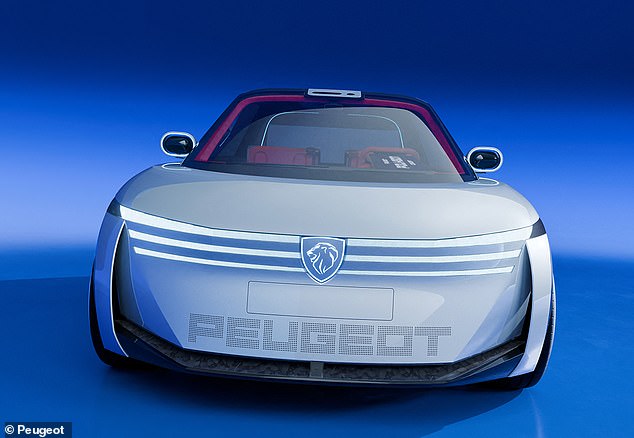
Peugeot has revealed its new Polygon concept EV, which takes on a ‘feline futuristic design’ and is supposed to make driving as fun and as enjoyable as possible
The Polygon’s feline looks
‘Feline futuristic design’. Those are the buzz words for the Polygon.
The little car is a cat-like visualisation of a new Peugeot e-208 and it does look like something from a cartoon future.
Micro LED brings together the Polygon’s design, with the French brand’s famous three-claw light signature – this time flipped horizontally – shaping the front.
While the car is parked, the light signature brings the front and rear to life with graphic and colour configurations.
The pop-up cable connector, located on the car’s C-pillar, has its own Micro-LED screen as well (so it’s easy to check the charge level from the outside).
The design, which Peugeot says is simple, pure, and geometric, is largely focused on fun colour. And there really is colour everywhere – from the body panels, wheels, seat foam and tyres.
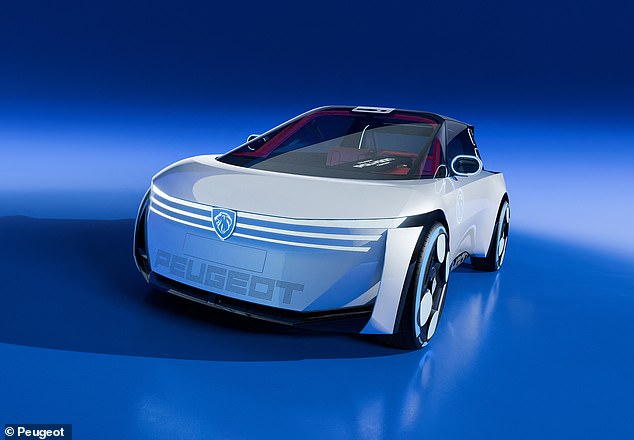
Micro LED brings together the Polygon’s design, with the French brand’s famous three-claw light signature – this time flipped horizontally – shaping the front

It has two XXL butterfly doors which help to reduce parts and create more space as well as give it a impactful look

The pop-up cable connector, located on the car’s C pillar, has its own Micro-LED screen (so it’s easy to check the charge level from the outside)
Hypersquare steering wheel… isn’t actually square
While the exterior of the Polygon is dramatic, Peugeot’s design time has taken it to a new level inside.
The Polygon showcases the latest version of the French firm’s Hypersquare and Steer-by-Wire – both of which are due for production and will work together to ‘reimagine the wheel entirely’.
The Hypersquare is the physical ‘steering wheel’: it’s rectangular – not square – and customisable. It looks a bit like a video game controller, and plays into that sci-fi look and feel.
The four circular pods at each corner allow you to always keep your hands on the steering wheel.
Steer-by-Wire is the electronic steering technology that replaces the mechanical link between the steering and front wheels with electronics. Unwanted feedback from the road is filtered out by Steer-by-Wire.

The Hypersquare is the physical ‘steering wheel’: it’s rectangular, futuristic, and customisable. It looks a bit like a video game controller, and plays into that sci-fi look and feel
Already used in the aerospace industry, the system adjust the steering ratio according to speed.
So, at low speeds or when parking or turning, Hypersquare allows quick, easy maneuvering without you needing to move your hands.
At high speeds Hypersquare only requires a very small input to adjust the car’s trajectory.
Together Peugeot says Hypersquare and Steer-by-Wire deliver ‘exceptional responsiveness and precision at high speed and unmatched comfort during manoeuvring and a unique feeling of hyper-agility’.

Steer-by-Wire is the electronic steering technology that replaces the mechanical link between the steering and front wheels with electronics
The Polygon cockpit – French design and some very futuristic tech
The Polygon isn’t just about the Hypersquare – it has many other angles to explore.
Most dramatically, the windscreen becomes the infotainment screen in the Polygon Concept, with all the information reflected onto the windscreen via a Micro-LED panel located behind Hypersquare.
The driver then has a ‘uniquely immersive experience’ through a 24cm by 74cm display – the equivalent to a 31-inch screen. That’s the same size as Smart TVs.
The driver can also personalise what information they want on the screen, and while the car is moving the windscreen projections are positioned directly in the driver’s eye line to maximise safety and remove distractions.
While stationary the Micro-LEDs behind Hypersquare are visible on the outside so passersby can see Polygon animations.
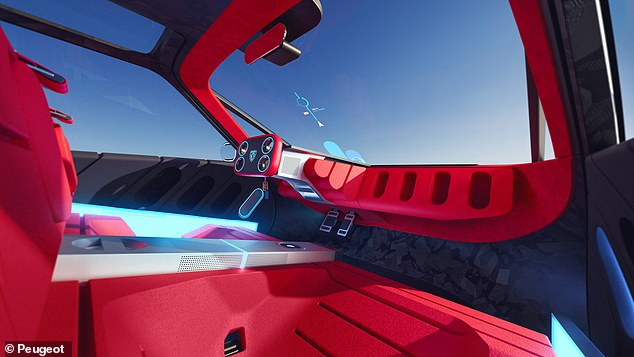
The driver then has a ‘uniquely immersive experience’ through a 24cm by 74cm display – the equivalent to a 31-inch screen. That’s the same size as Smart TVs
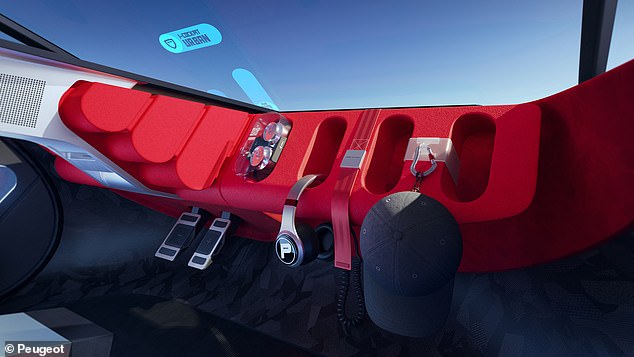
Personalisation means that front passengers can select their favourite items to create the right dash for them – with special holders for everything from phones to skateboards
A cabin to make your own
The reimagined dash frees up cabin space, so the tiny car is as spacious as possible.
Personalisation means that front passengers can select their favourite items to create the right dash for them – with special holders for everything from phones to skateboards.
Then the seats use a 3D-printed shell with a single-piece of moulded foam to make clean, geometric shapes that are very comfortable while being vastly different from traditional fabric seats.
Sit inside the cabin and it’ll seem extremely bright because of the glass canopy style roof surface which allows maximum natural light to flood in. The windscreen has been pushed forward and the B-pillar removed to insert this canopy.
The Hypersquare is available in a range of colours and materials, as well as the tailored display and the dash. And Peugeot and Goodyear have partnered to use laser tech to allow you to colour engrave your Polygon’s tyre sidewalls.
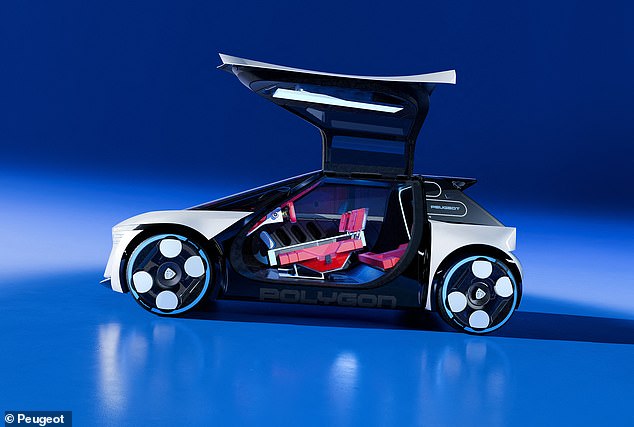
The Polygon’s interior paint lacquer contains components recycled from end-of-life tyres and the forged textile used in the cabin floor, roof lining and door panels is made from the recycled seats of dismantled Peugeot vehicles
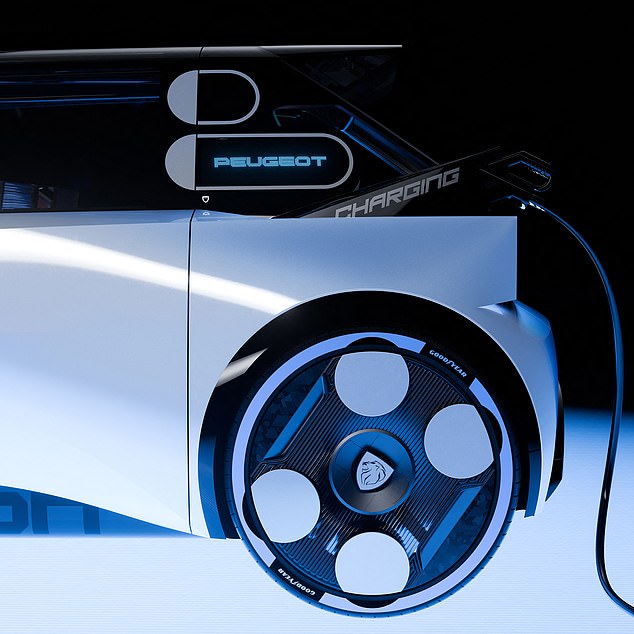
Even the Polygon’s wheel covers are made from recycle plastic too. It’s a highly sustainable car
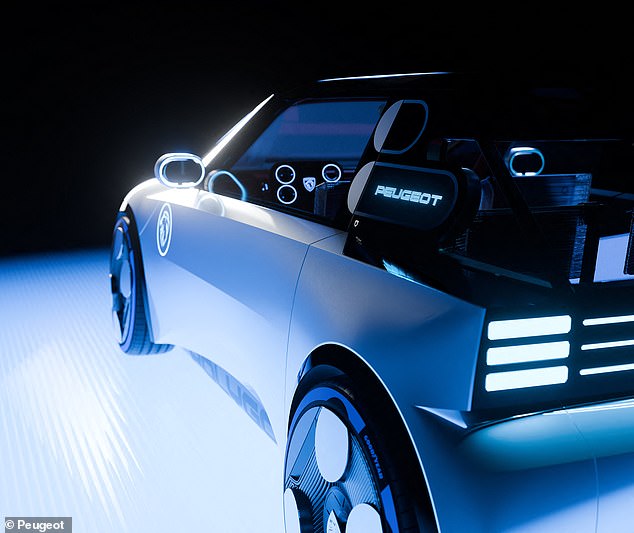
Peugeot says the Polygon ‘is a true dynamic proving ground, testing and showcasing numerous innovations that PEUGEOT will introduce from 2027 onwards’
A radical concept with recycled materials – how sustainable is the Polygon?
This concept car could win awards for sustainability as everything from manufacturing to materials has been done with the environment in mind.
The Polygon’s interior paint lacquer contains components recycled from end-of-life tyres and the forged textile used in the cabin floor, roof lining and door panels is made from the recycled seats of dismantled Peugeot vehicles. The wheel covers are made from recycle plastic too.
The Polygon also has fewer parts than a traditional vehicle; for example the seats have just three main components and the two XXL butterfly doors replace four conventional doors. This makes assembly and disassembly easier and more efficient.
What is the Polygon going to turn into?
Touted to potentially show what the new e-208 EV could be like, if the Polygon turns into a production car, or some variation of it does, then it will likely sit on Stellantis’s STLA Small platform which is expected to underpin the Vauxhall Corsa GSE Vision Gran Turismo concept too.
Peugeot says the Polygon ‘is a true dynamic proving ground, testing and showcasing numerous innovations that PEUGEOT will introduce from 2027 onwards – notably the revolutionary Hypersquare® steering wheel and Steer-by-Wire technology.’
